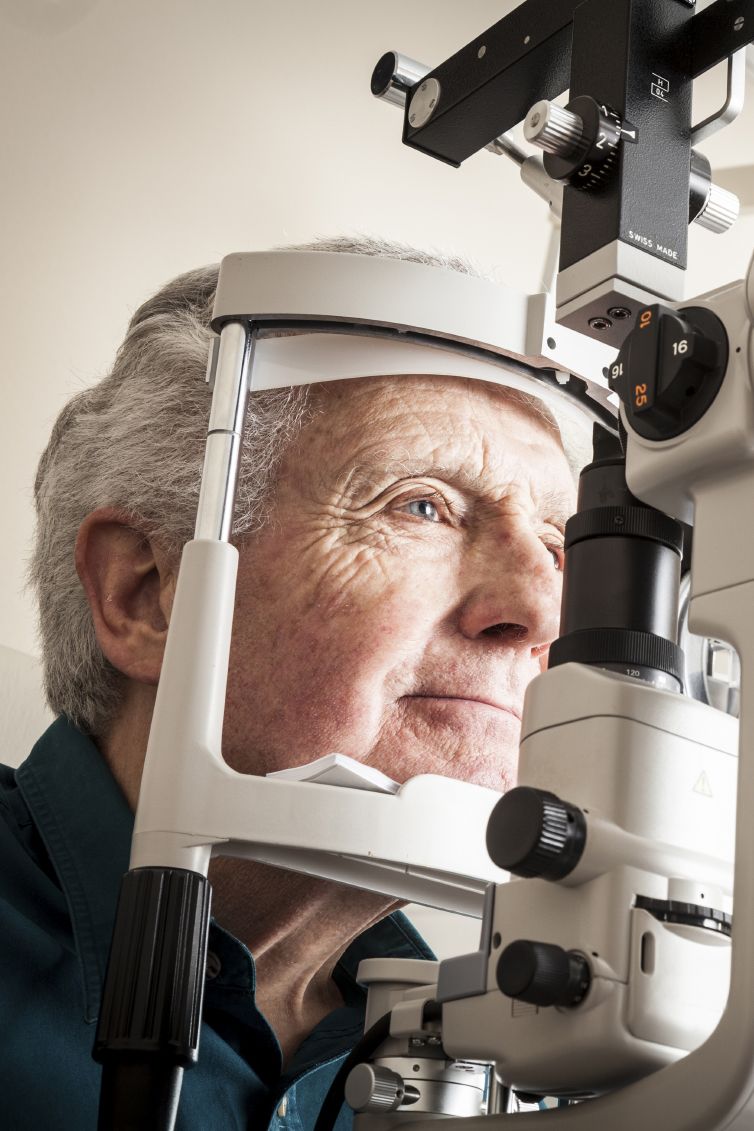 Comprehensive eye exams give doctors a full view of the blood vessels, nerves, and connective tissues of the eye. During these examinations, doctors can diagnose eye diseases, such as cataracts, which can compromise vision. Eye exams can also detect other illnesses and conditions that affect a person’s overall health.
Comprehensive eye exams give doctors a full view of the blood vessels, nerves, and connective tissues of the eye. During these examinations, doctors can diagnose eye diseases, such as cataracts, which can compromise vision. Eye exams can also detect other illnesses and conditions that affect a person’s overall health.
Eye exams are important throughout a person’s life, but they become even more vital as a person ages and the risk of eye diseases increase. Here, Dr. Raul Peña prepares our Harlingen, TX, patients for what to expect at senior eye exams.
How Often Do Seniors Require Eye Exams?
Healthy children and adults who are free of conditions that increase the risk of eye disease should schedule routine eye exams once every two years. However, once people reach their senior years, eye diseases like glaucoma and cataracts become far more common. Since early treatment is key to preserving a person’s eyesight, individuals aged 60 and over are urged to schedule comprehensive eye exams at least once a year.
What Can I Expect at a Senior Eye Exam?
A senior eye exam generally begins with a conversation regarding the patient’s medical history. Dr. Peña will discuss the patient’s personal and family health history, paying particular attention to any hereditary problems related to eye disease, vision problems, diabetes, or high blood pressure. Dr. Peña will also go over any active vision prescriptions, and ask if the patient has noticed any changes in vision.
Following these discussions, our Harlingen patients can expect a series of tests:
- Vision test: Using eye charts, Dr. Peña will measure the patient’s vision. Vision will be tested for any signs of nearsightedness, farsightedness, or astigmatism.
- Test of peripheral vision: Peripheral vision will be tested by moving an object to the edge of the field of vision.
- Color testing: Color testing allows us to determine if patients can distinguish between colors. This exam usually involves making out an image that is concealed within a series of colored dots.
- Response to light: Dr. Peña will shine a light on the pupil to test whether it is responding to light as anticipated.
- Eye muscle coordination: Patients will be asked to follow a light as it is moved in a pattern. The goal is to test whether the patient is able to use both eyes together.
- Eyelid exam: A visual examination of the eyelid will be performed to see if it is healthy and functioning properly.
- Examination of the inner eye: The eyes will be dilated and a tool called an ophthalmoscope will be used to view the inner eye, including the retina and optic nerve. This is a vital part of the eye exam, since this is where the first signs of disease are apparent.
- Measurement of intraocular pressure: During this test, a puff of air is blown on the eye with a tool called a tonometer. This allows Dr. Peña to measure intraocular pressure. This is another vital exam, because increased pressure can be an indicator of glaucoma or other eye diseases.
At the end of the exam, Dr. Peña will go over test results and advise patients if any follow-up treatment is needed. If all tests are clear, the patient should be good to go until the next annual exam.
Schedule an Appointment
A yearly eye exam is the best way for seniors to maintain eye health and preserve clear eyesight. If you are due for a comprehensive eye exam, call our Harlingen eye institute at (956) 661-8733 to schedule an appointment with Dr. Raul Peña at your earliest convenience.

